Thank you dear readers for joining me here on my substack. Today we are going to take a walk in the woods.
Last Sunday, I joined a few dozen people for a snowy walk through what will hopefully become the Rae Blackwell Nature Reserve near Centreton, Ontario. The current owners, Graeme Harris and S.R. Slobodian, have pledged to donate their land to the Northumberland Land Trust turning it into a nature reserve in the next few years. Graeme was delighted for the opportunity to show the property off to us. He led the way down the established paths which he hopes will become open to the public once all of the paperwork is done and the land becomes managed by the land trust.
An invitation was sent out to the land trust’s mailing list and the response was remarkable given the cool temperatures of late. Clearly, people are looking for this type of outdoor experience and were well dressed and ready for the walk which was expected to last about an hour. We gathered on a sideroad near the property at 10 am and headed out soon thereafter.
The snow was powdery and the walking easy as we left en masse, spreading out lengthwise along the paths as we went. We kept a watch out for animal tracks crossing the path along the way. Each set telling a story from the night and or day before. Many of the tracks were hard to identify as the snow had been rained on the previous day followed by an additional layer of powder overnight. This left the snow pock marked and the tracks a bit indistinct. Still, you could tell this is a busy route. The first thing we noticed were all the wild turkey tracks, and they were everywhere. At one point we encountered their scat on the trail and looked up to see where they must have roosted overnight.
Helping to make sense of what we were looking at was naturalist and NLT acquisitions manager Doug McRae. Doug is a wealth of information but was certainly not the only person on the hike with a noggin full of fun facts to relate as we made our way deeper into the property. Walking with nature lovers is like that. There is always something new to learn.
At one point, the trail turned into a young cedar grove, cutting like a tunnel through the woods. Places like this are sacred and need protecting.
Imagine a network of properties like this across the nation where people are free to wander and enjoy nature beyond the reach of of development pressures. Protecting currently held private lands for future generations is at the heart of what land trusts are all about.
We continued our way through the property, stopping every once in a while to look and listen. Being present in nature put everyone at ease and in a good mood. The troubles of the world seem to fade just a little in places and at times like this.
Near the centre of the property, the land dips down into a natural bowl, where the trees are older and have been left for extended periods with little or no human intervention.
The trees provide food and lodging for the creatures of the forest, letting nature take its course rather than forcing it to conform to our wishes. The walk lasted about an hour and was not difficult. Good exercise and fresh air all the same. The people who go on these walks are gentle souls, able to appreciate the little things we came across along our route.
What can be more lovely than nature left to its own devices?
In the hands of just two families including the current owner’s recent occupation, this land was first settled in the early 19th century. As such, the property has been spared further development. It has a variety of woods and meadows and features a small head stream that leads south towards Shelter Valley and Lake Ontario.
The photo below shows where the trail crosses the small stream on the property. Just after I took this image, a pileated woodpecker crossed over the creek. I saw it, but wasn’t fast enough to get a picture before it disappeared out of site. Apparently, a downy was also spotted at this location by those at the front of the line.
Turning around to the other side of the small bridge, I noticed a hose had been set up carrying some unseen water source from the ground, likely a small spring. I stopped to take a few pictures, circling around the structure to find a clean visual backdrop.
The groundwater dropping from the line through the frigid air had formed an icy stalagmite; the water drilling down through the column into a small cave adjacent to the stream.
I think I could have spent all day here photographing this transition from water to ice, but feeling the need to keep up with the group, I carried on.
Throughout the walk we paid close attention to the tracks left by the forest creatures around us. Deer mostly, but some coyote, lots of wild turkey and perhaps most surprising, quite a few fisher tracks.
We saw numerous fisher tracks along the trail. As Doug McRae pointed out, they are characterized by two footprints side by side, followed by quite a large gap and then another set of two footprints side by side, reflecting the loping motion of the animal. The footprint in the middle of the image above is another animal, travelling across the fisher’s track.
Drill holes, left by a pileated woodpecker. Do you pronounce it Pill-e-ated or Pile-ated? Does it even matter? I think not. I love everything about this bird, including its name.
The wrinkles of this tree are beautiful. Wrinkles in the skin of living creatures are always beautiful. They representing the passage of time and corporal existence. How many years has this tree borne witness to the plants and creatures around it. Perhaps we as humans could learn a thing or two reflecting on the beauty of a wrinkly old tree.
Leslie Abram, seen above, sent out the invitations for the day. A keen nature photographer and member of the NLT communications and outreach team, she often stops to explain the stories inherent in the properties we visit. Here, she turns to see how far back our procession extends.
As usual, Doug McRae can be found at the back of the line, often deep in conversation with another straggler, but always attuned to the sights and sounds of the natural world around us. At one point he stopped to mimic a hoot owl much to the delight of many of the walkers, but alas, no owls answered his call on this day.
The walk of about 3 km was almost over. But before it ended, there was one more natural phenomenon to discover. Oak galls.
Oak galls like the ones pictured above and below, are built by small oak gall wasps and usually appear on, you guessed it, oak trees. Although they may cause some leaves to drop prematurely on the tree, in general they are not harmful to the host plant. Inside the galls are the eggs and larvae of the oak gall wasp. When the galls are fresh, they look like tiny apples but turn pale brown once the adult wasp emerges. The tiny holes you see are the exit ports indicating the gall is now empty.
Above, you can see how oak galls often appear in groups. Below, one of the galls had broken open revealing what was left of the interior.
Interestingly, oak galls have traditionally been used to create oak gall ink, also known as iron gall ink because the other ingredient used in the process is ferrous sulfate, which can be derived from iron. The oak galls are rich in tannins, as a natural defense, and were used in the production of this common ink, which according to this article on how to make oak gall ink was used to write the Declaration of Independence. At one time, most documents in temperate climates would have been made using this common resource.
And that brings this walk with the Northumberland Land Trust to an end. If you wish to learn more about the organization, visit their website at nltrust.ca. Check out the events page to find out what is coming up. To attend one the events, just pre-register at the email provided.
If you found this post interesting, you may also want to visit a couple of my earlier posts about the Northumberland Land Trust including our fall and summer walks at Lone Pine Marsh.
And as usual, I will leave you with a tune and please remember to get out and enjoy winter if you can.

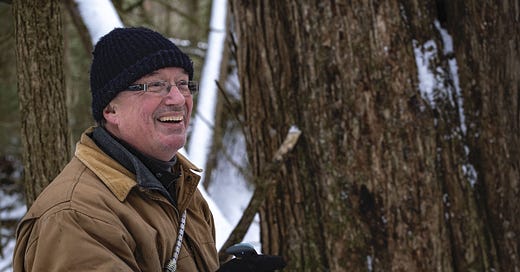



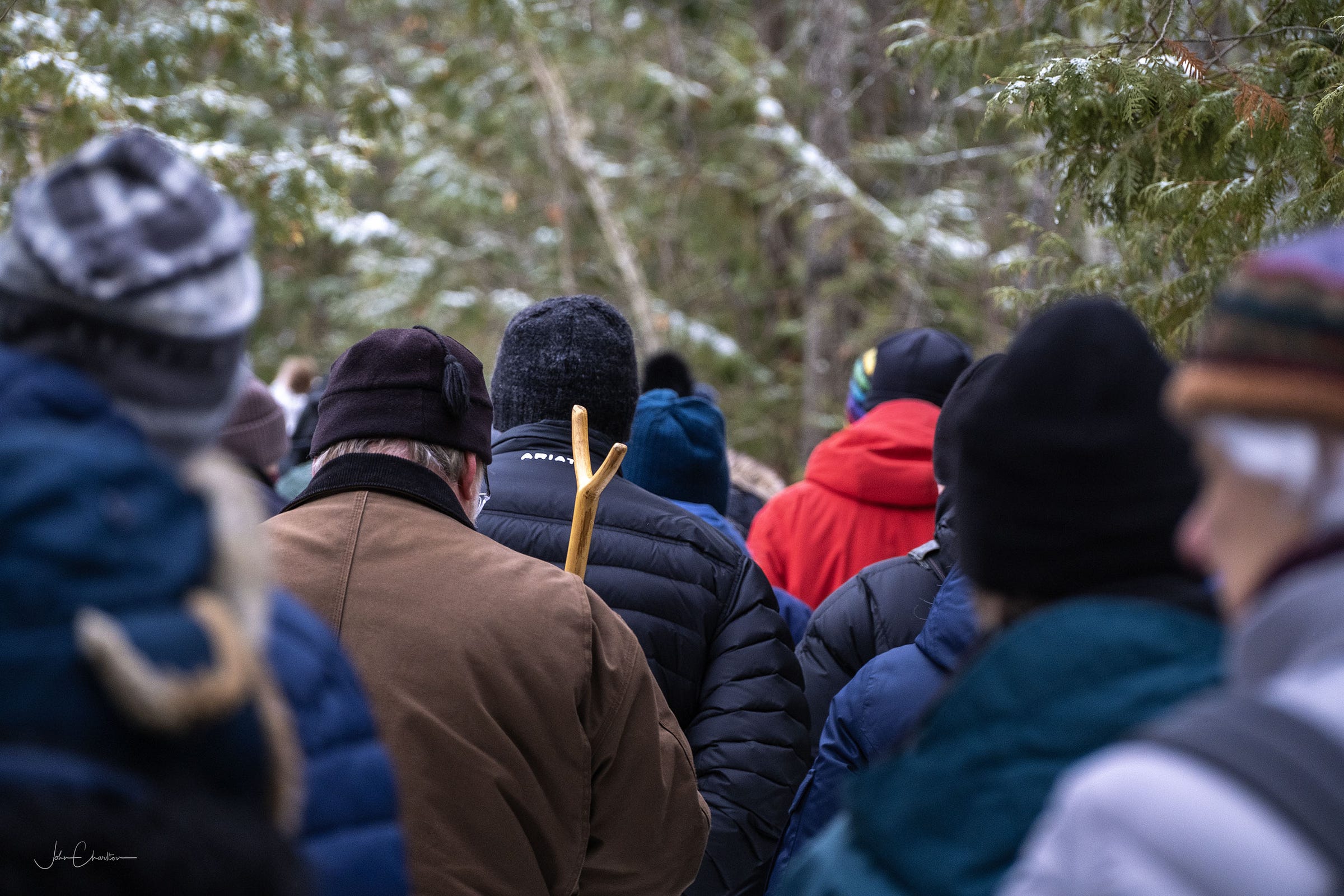
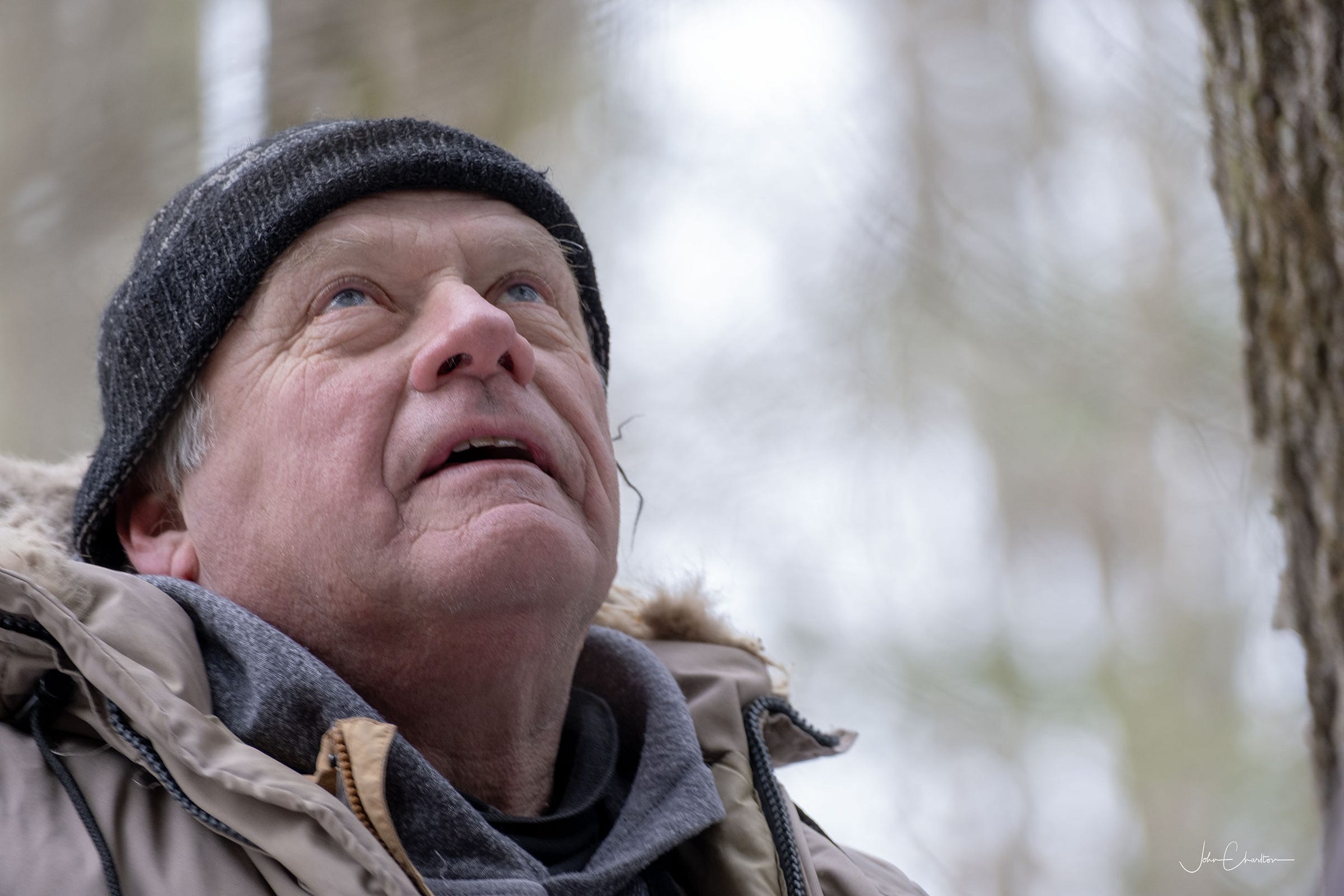
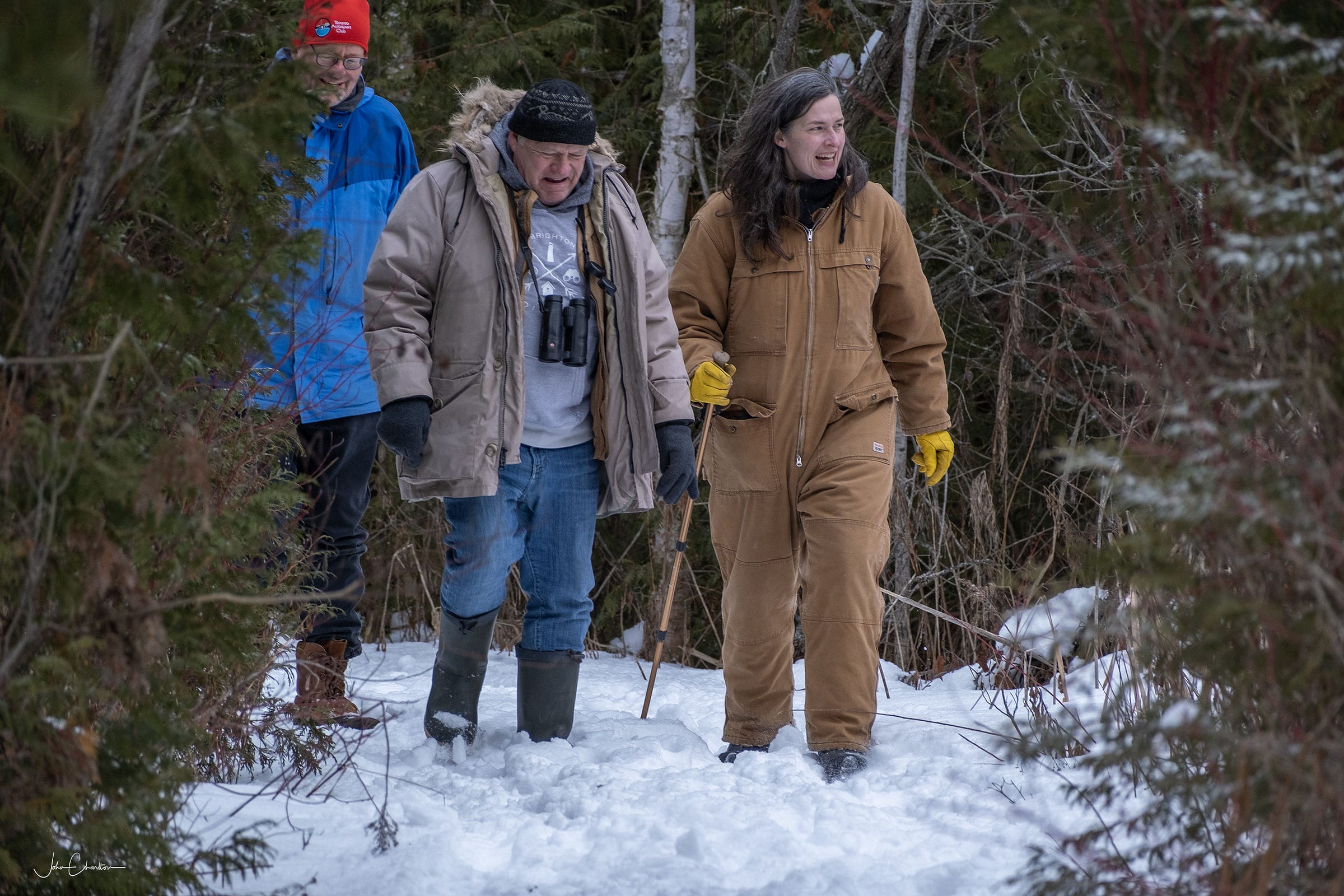
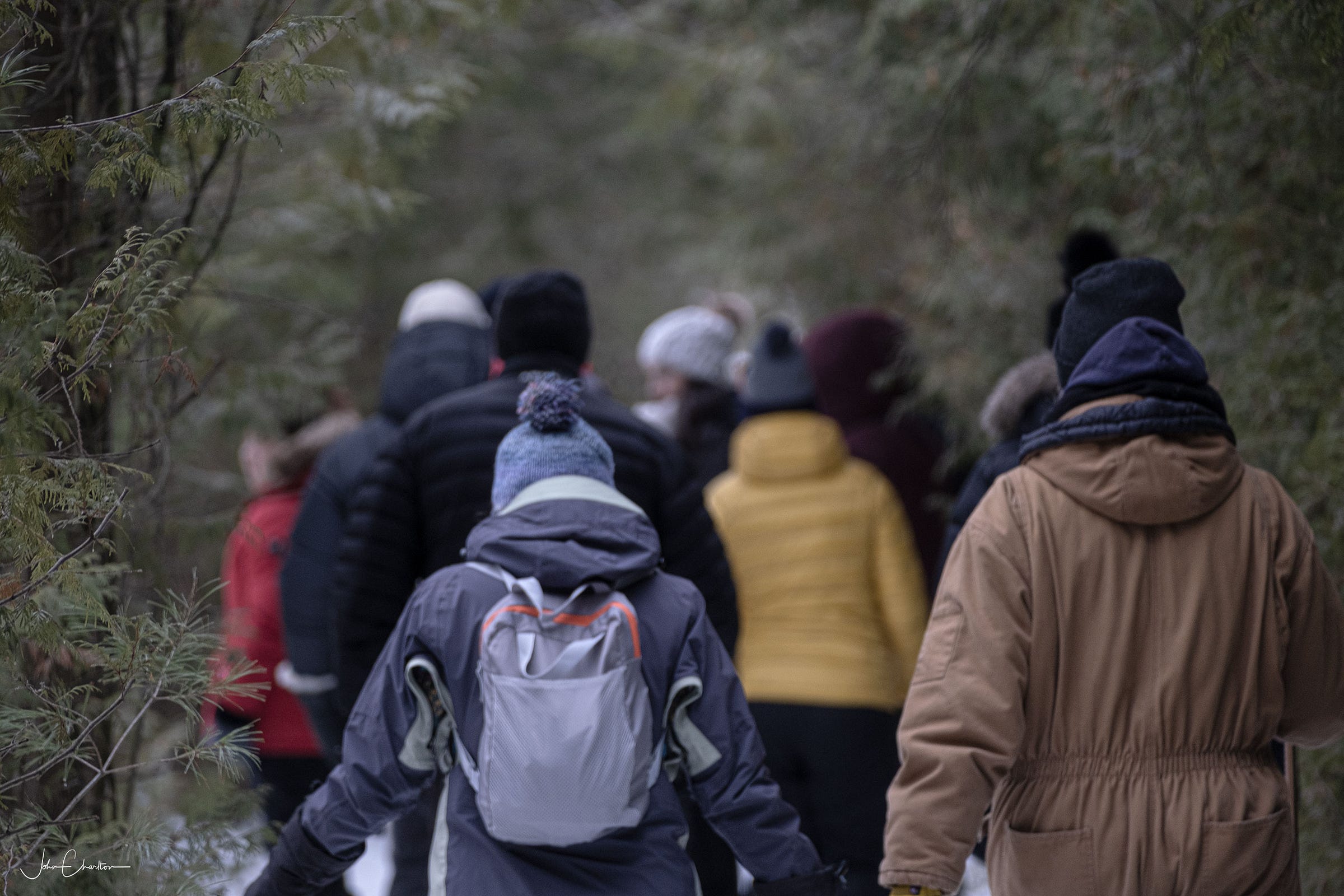
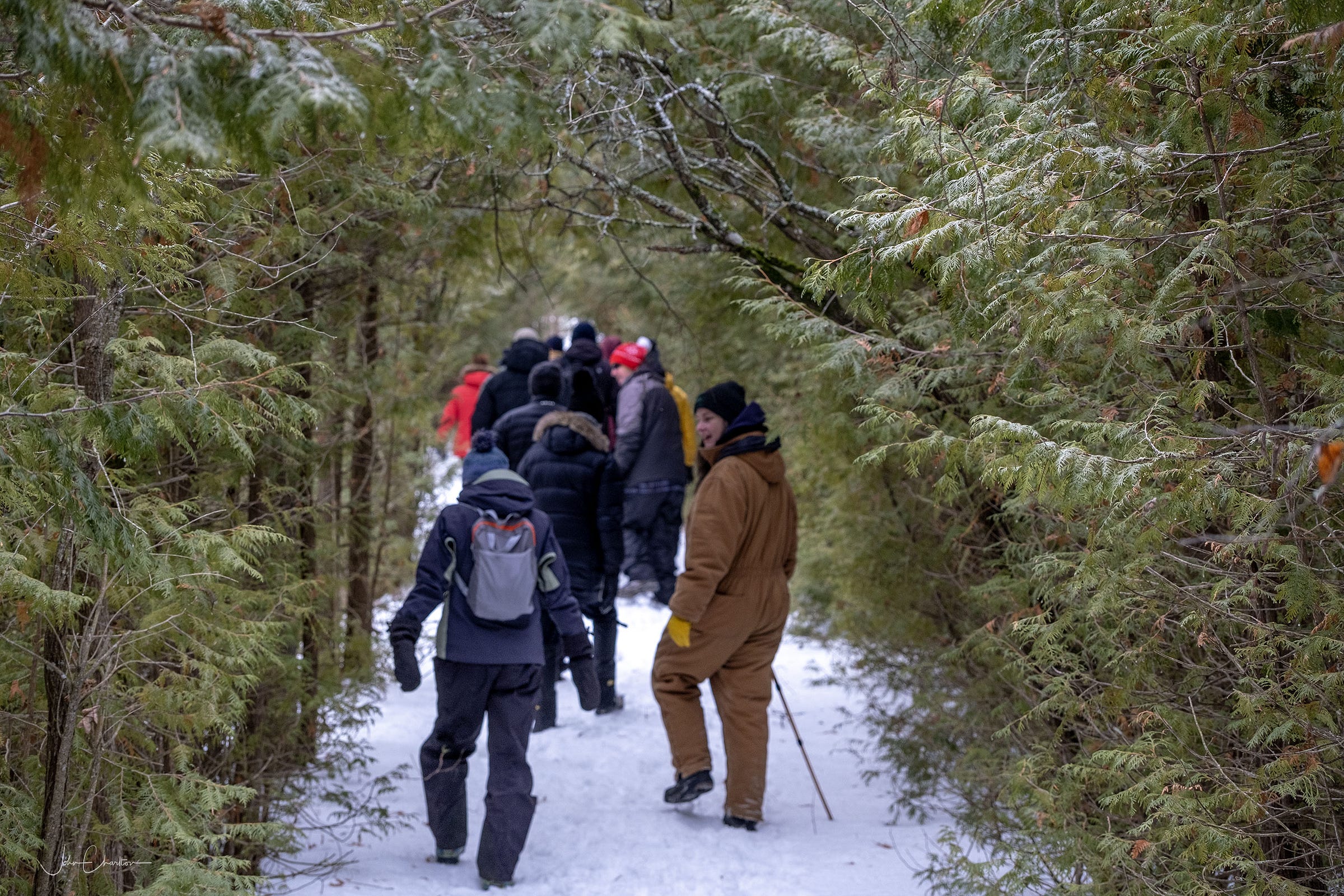
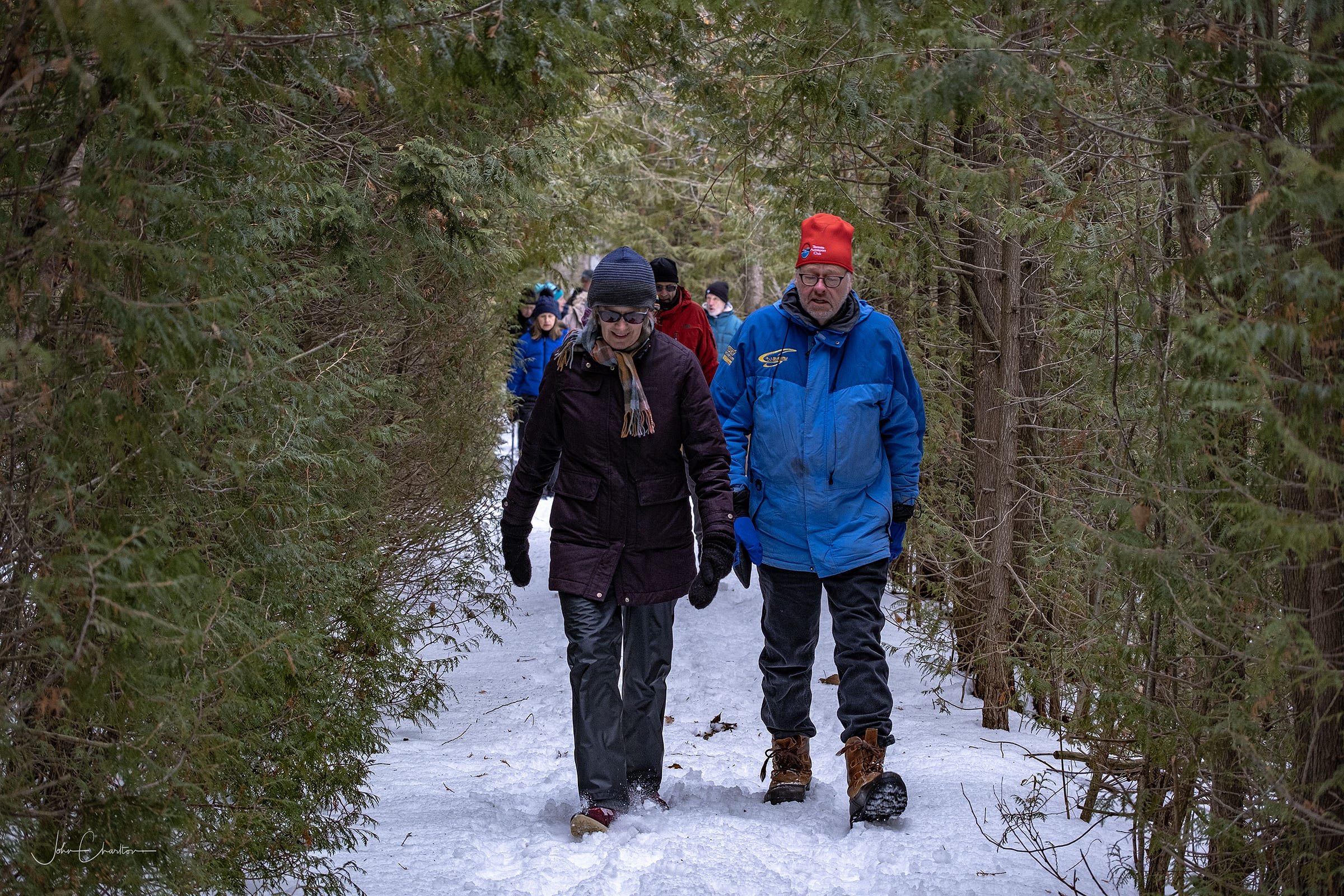
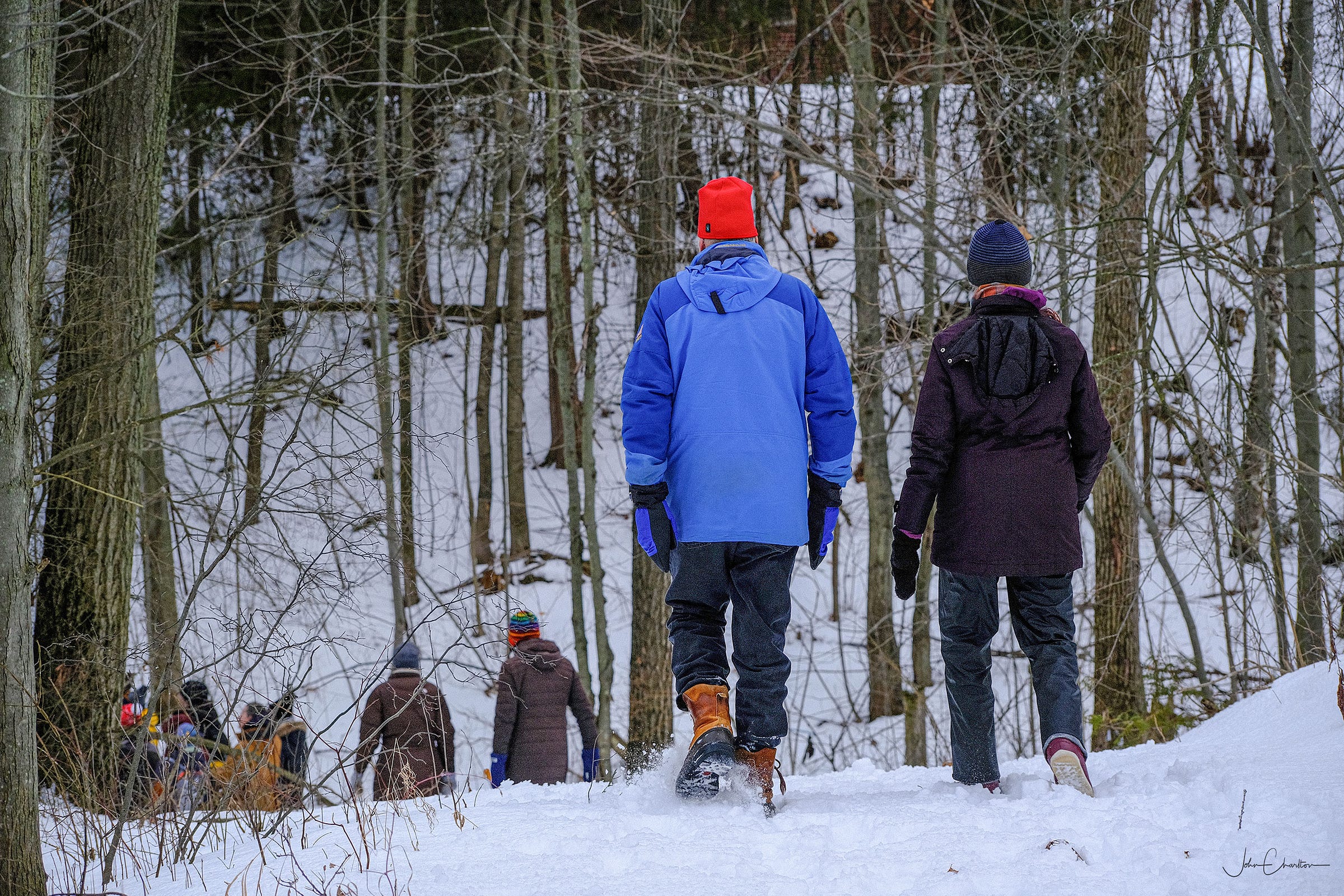
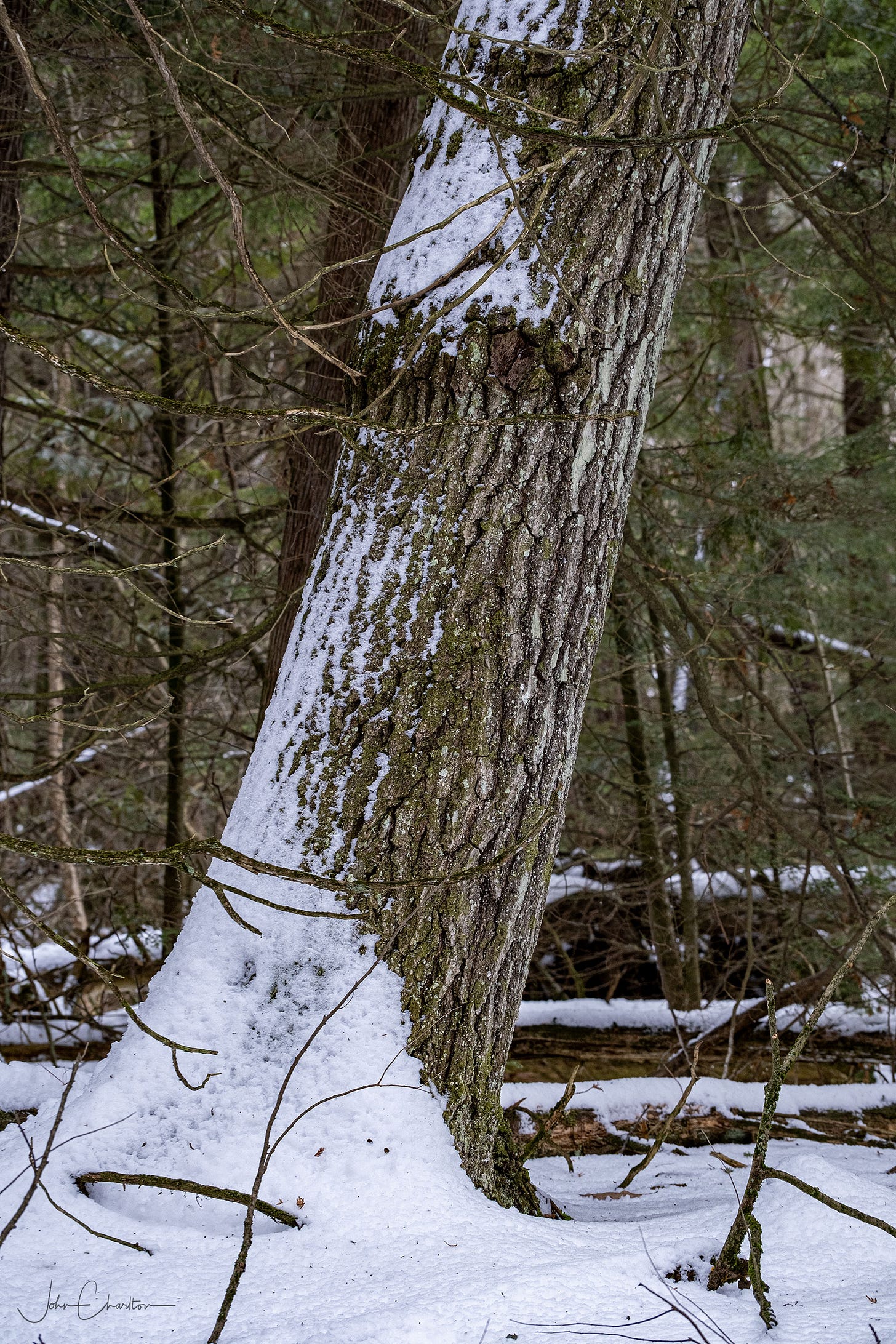
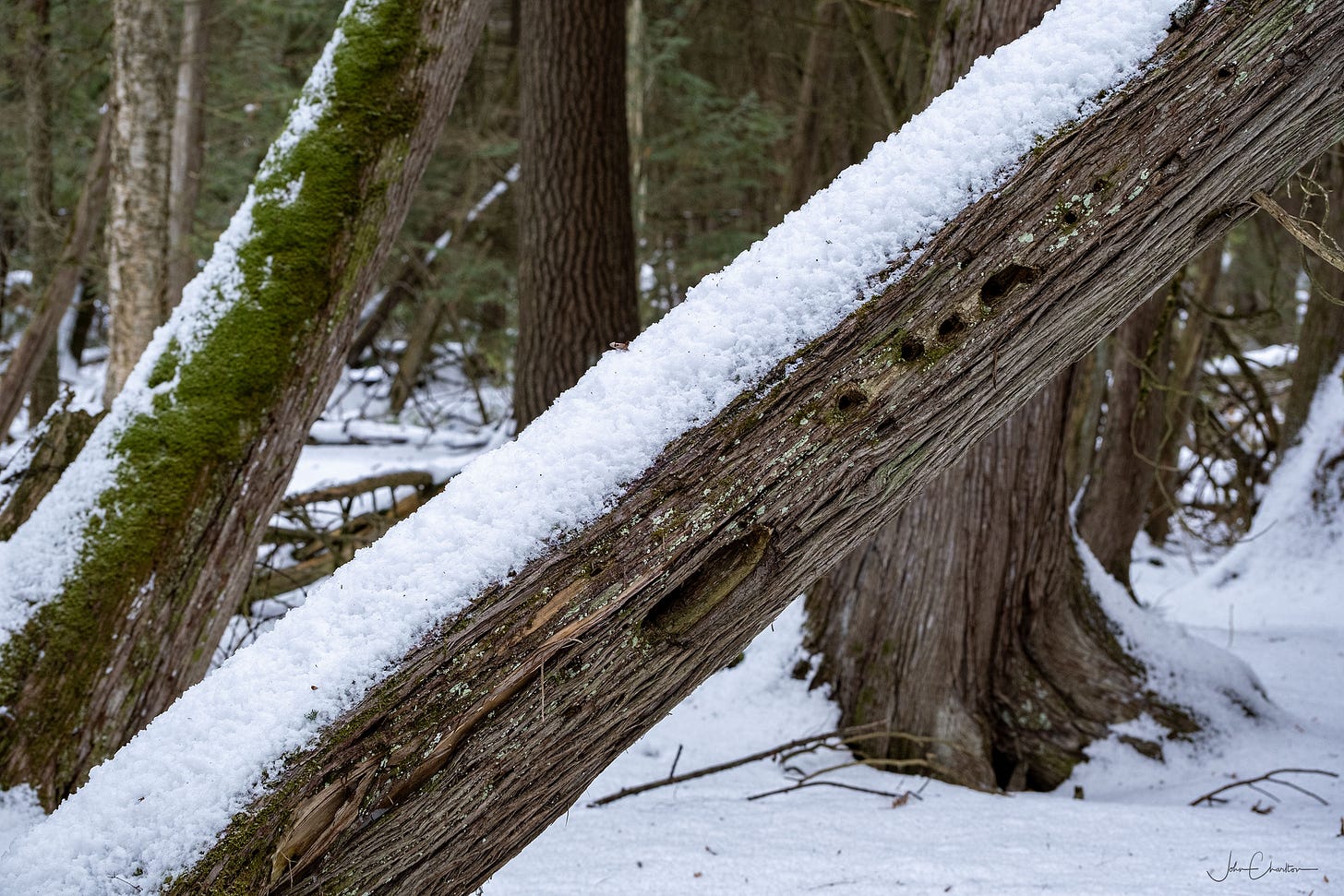
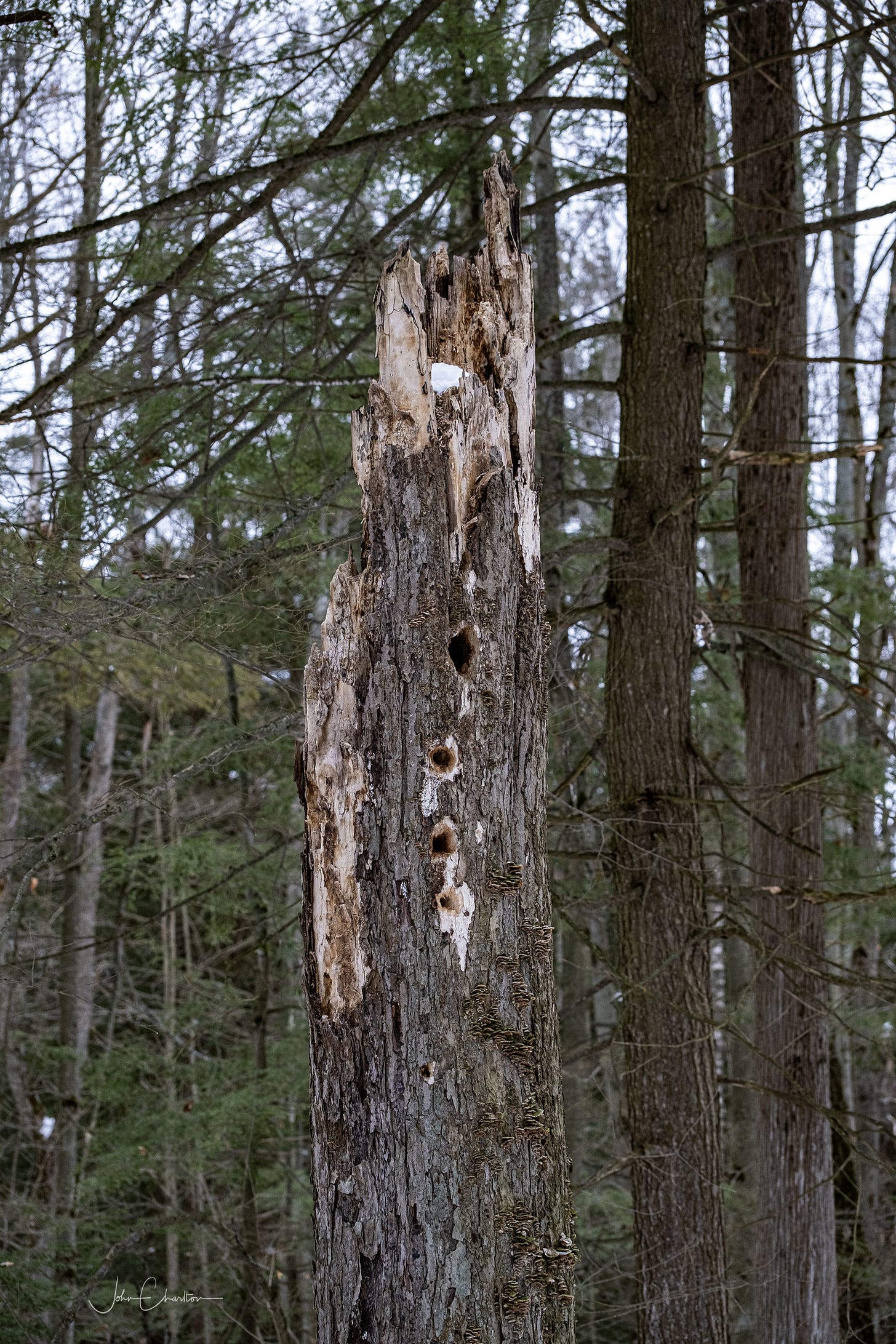
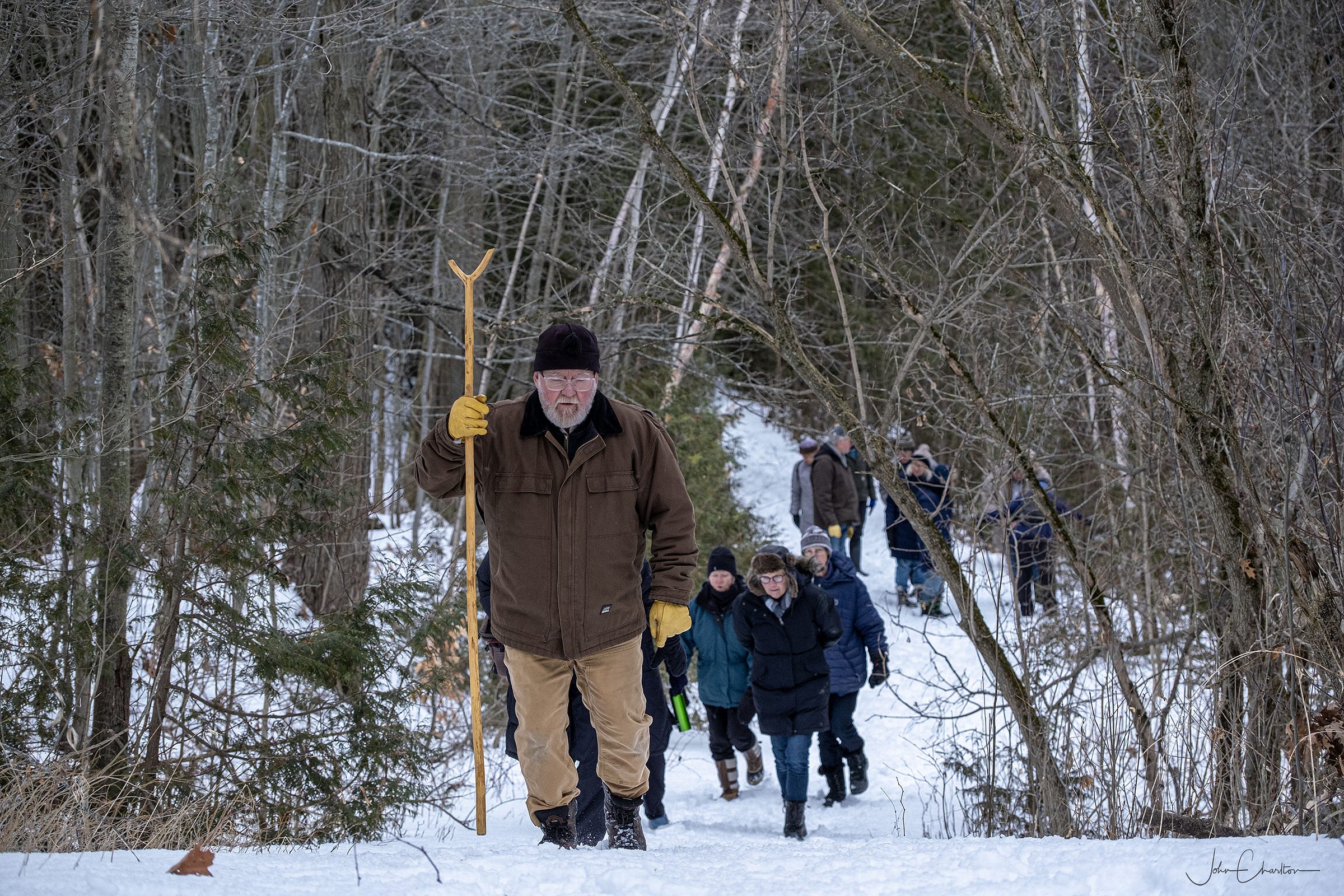
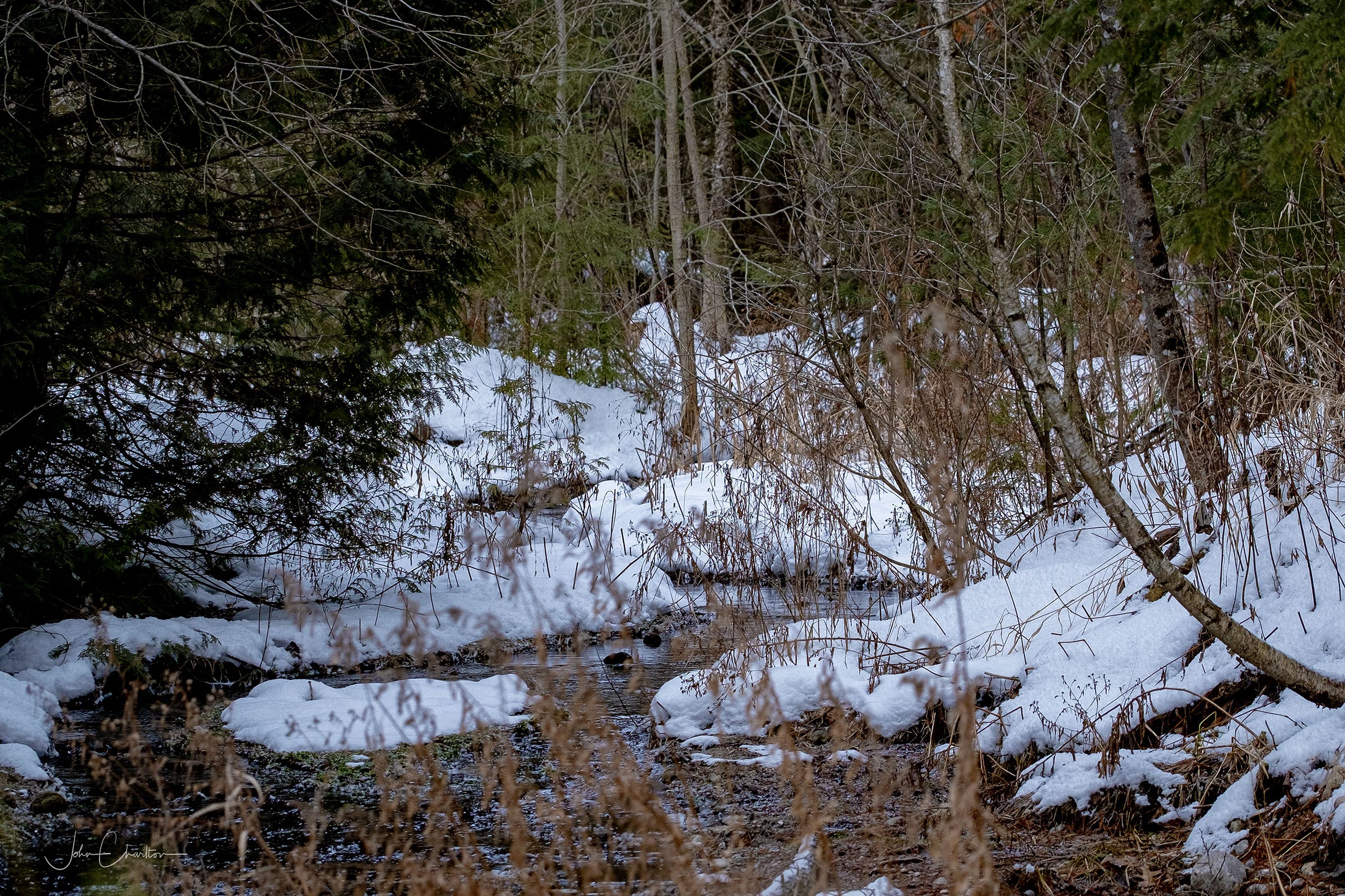
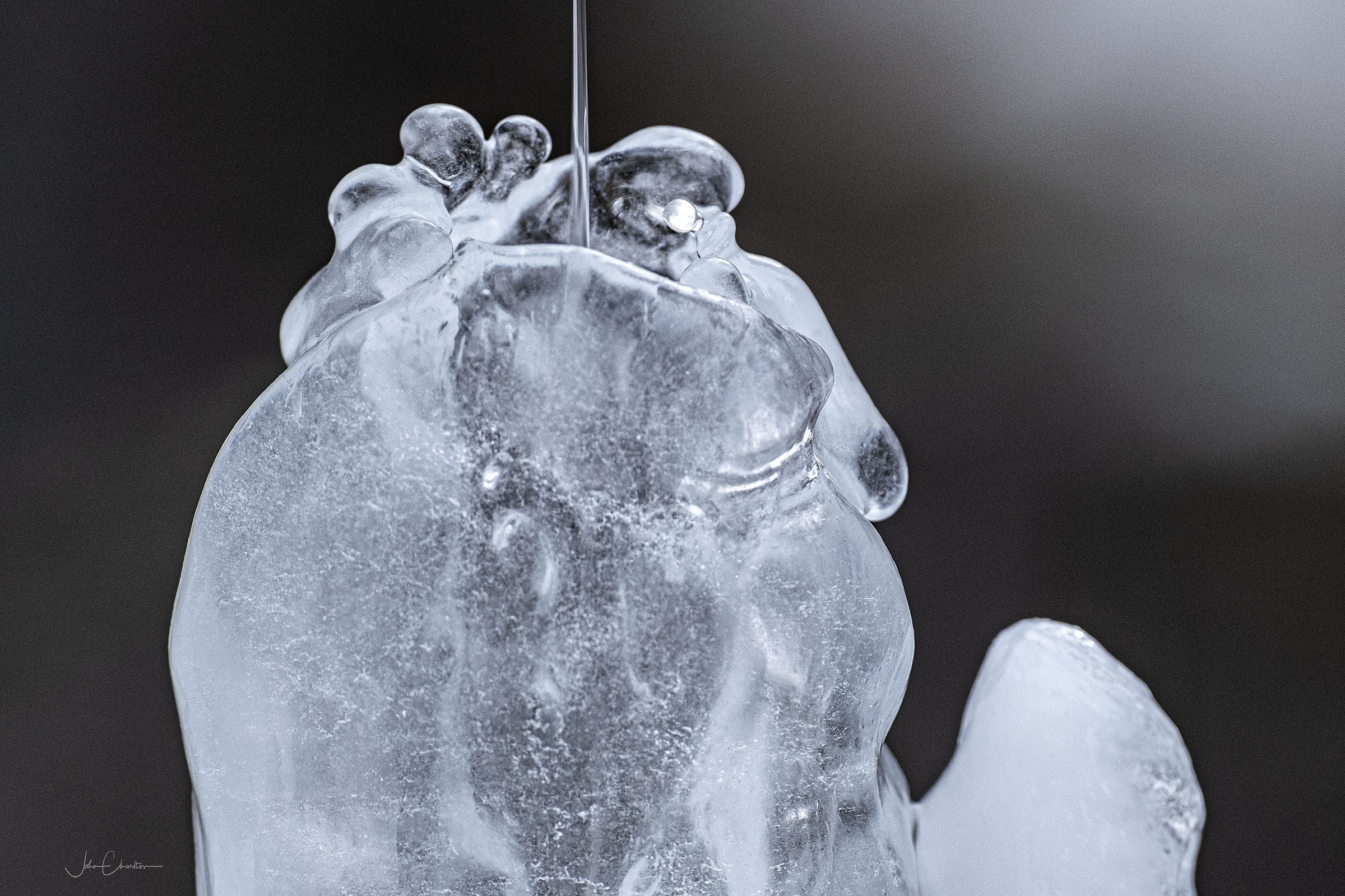
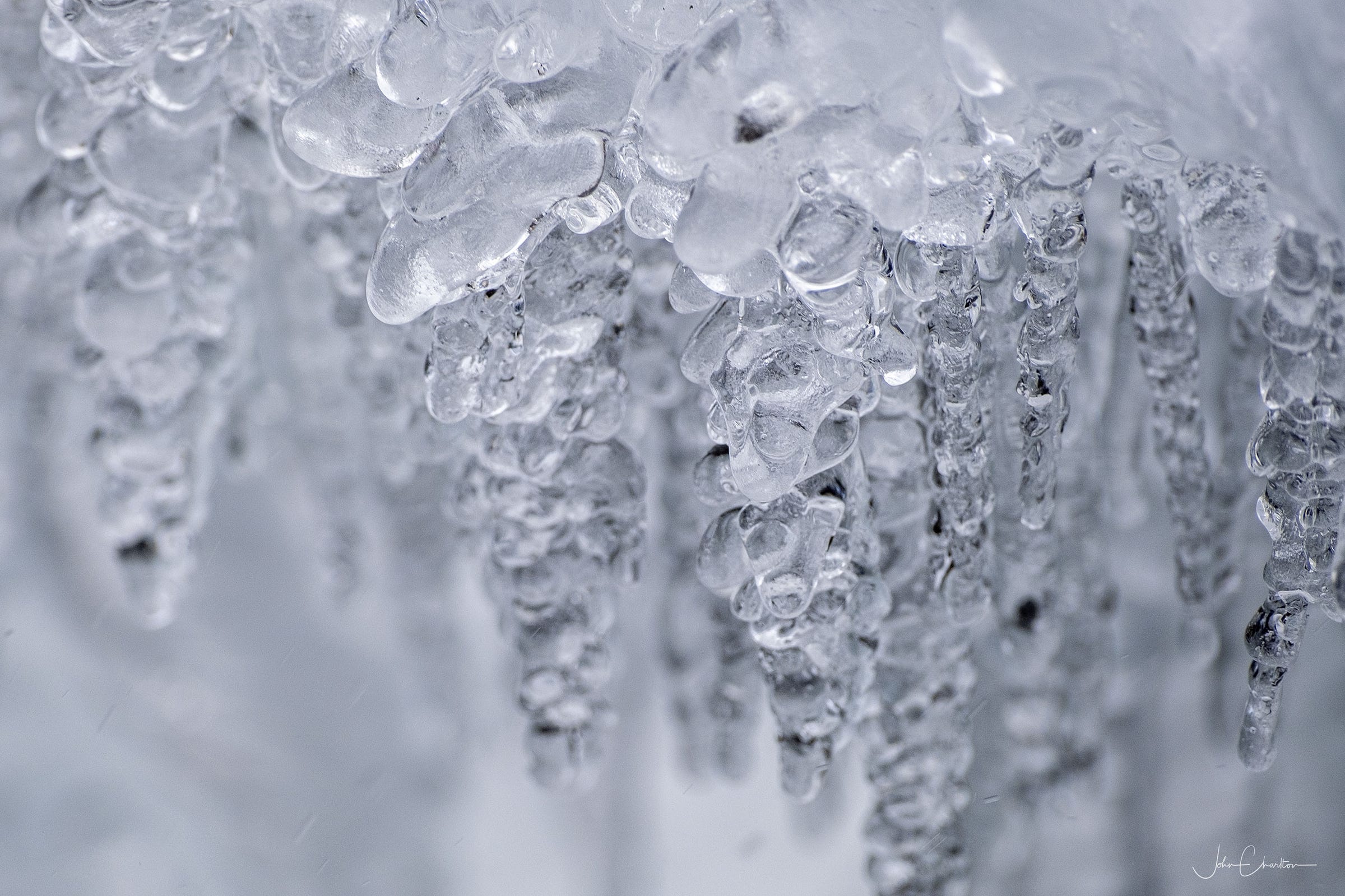
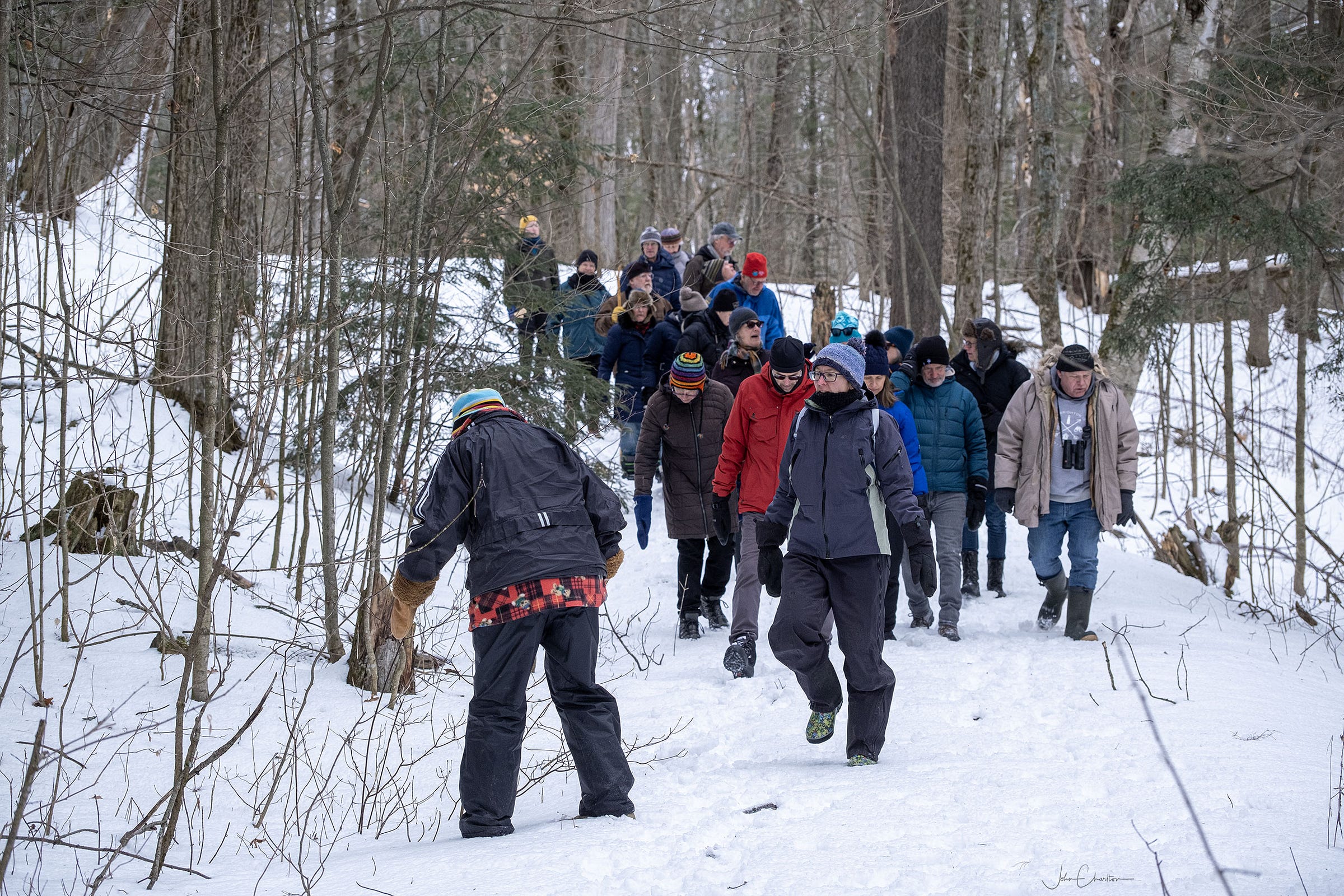
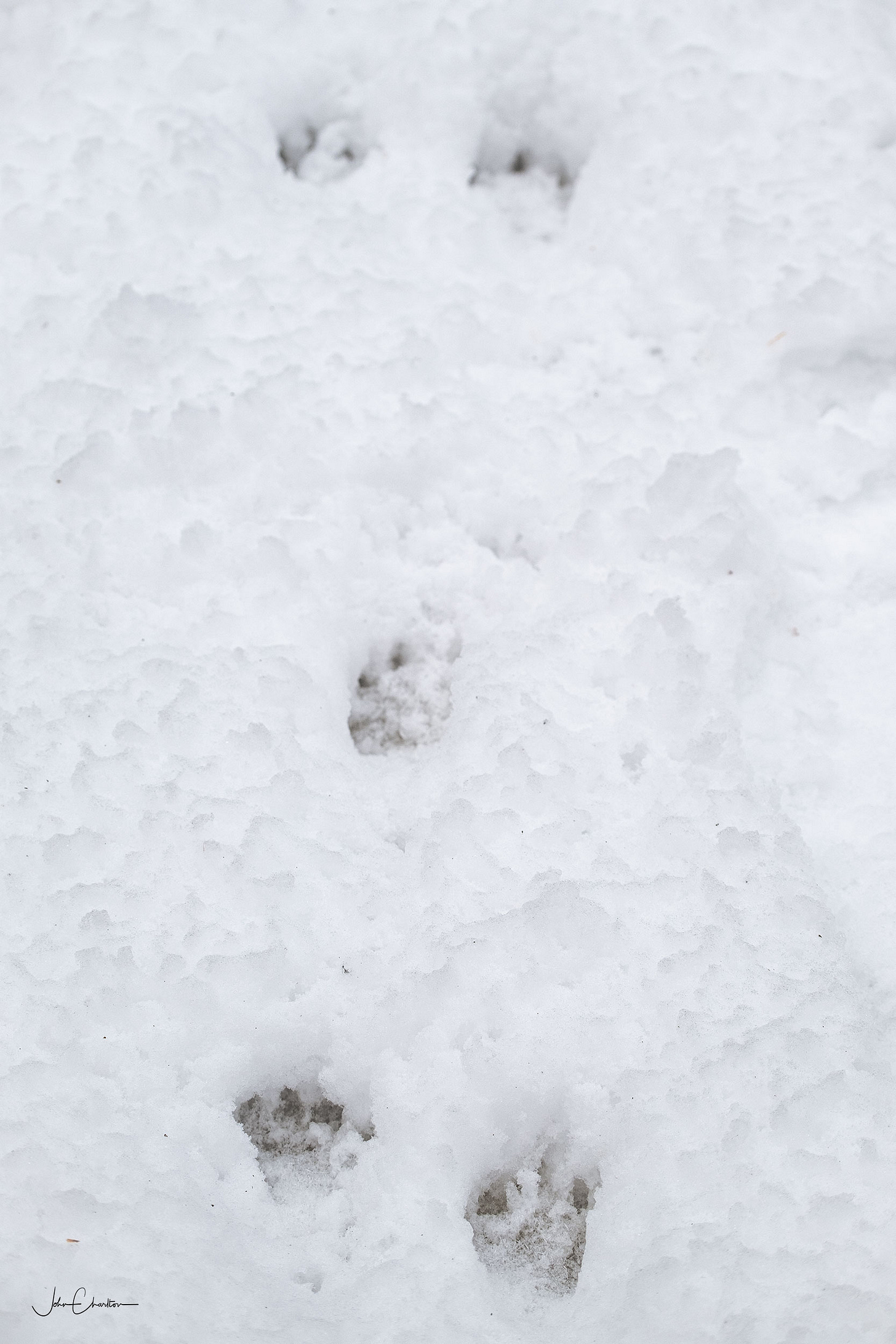
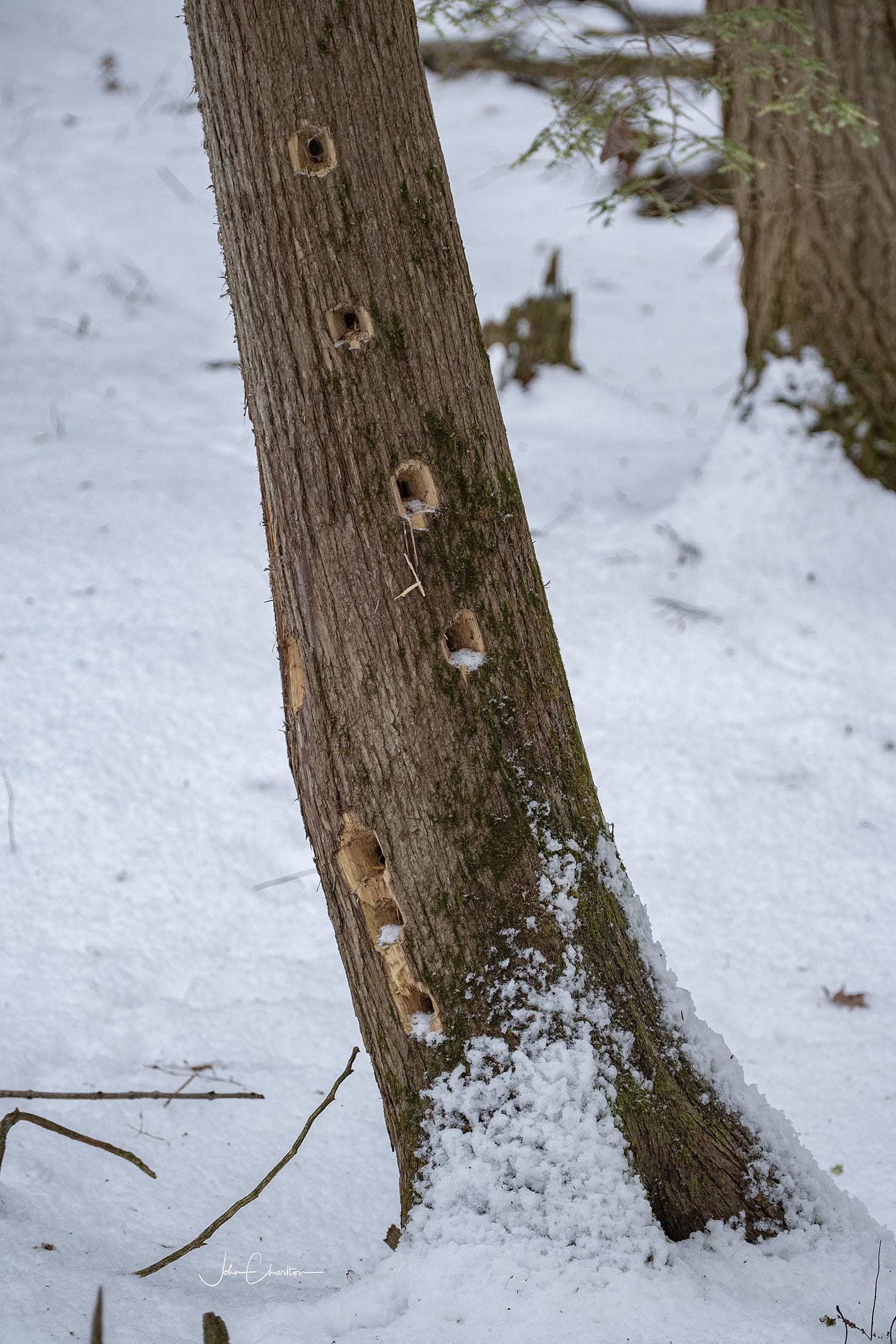

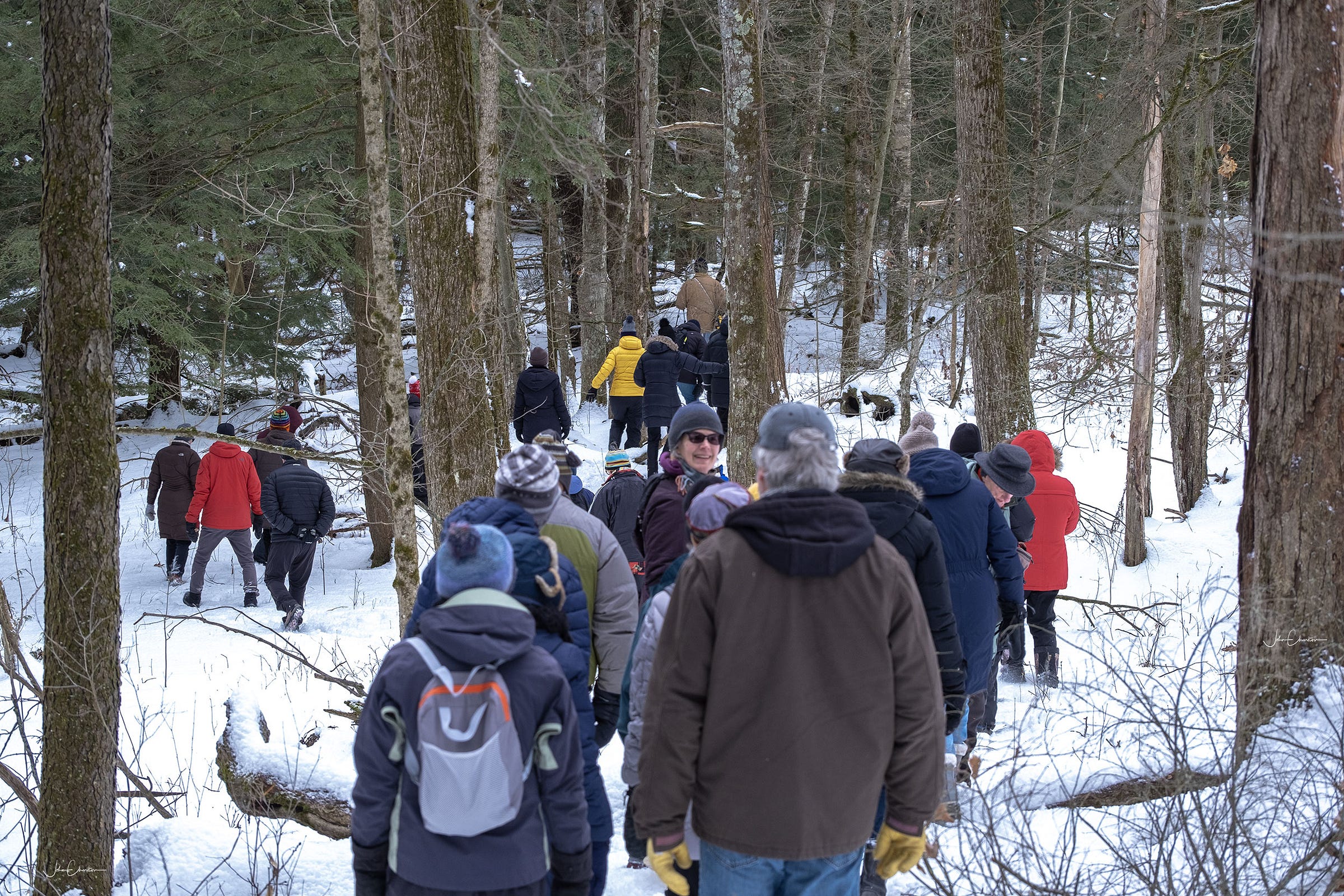
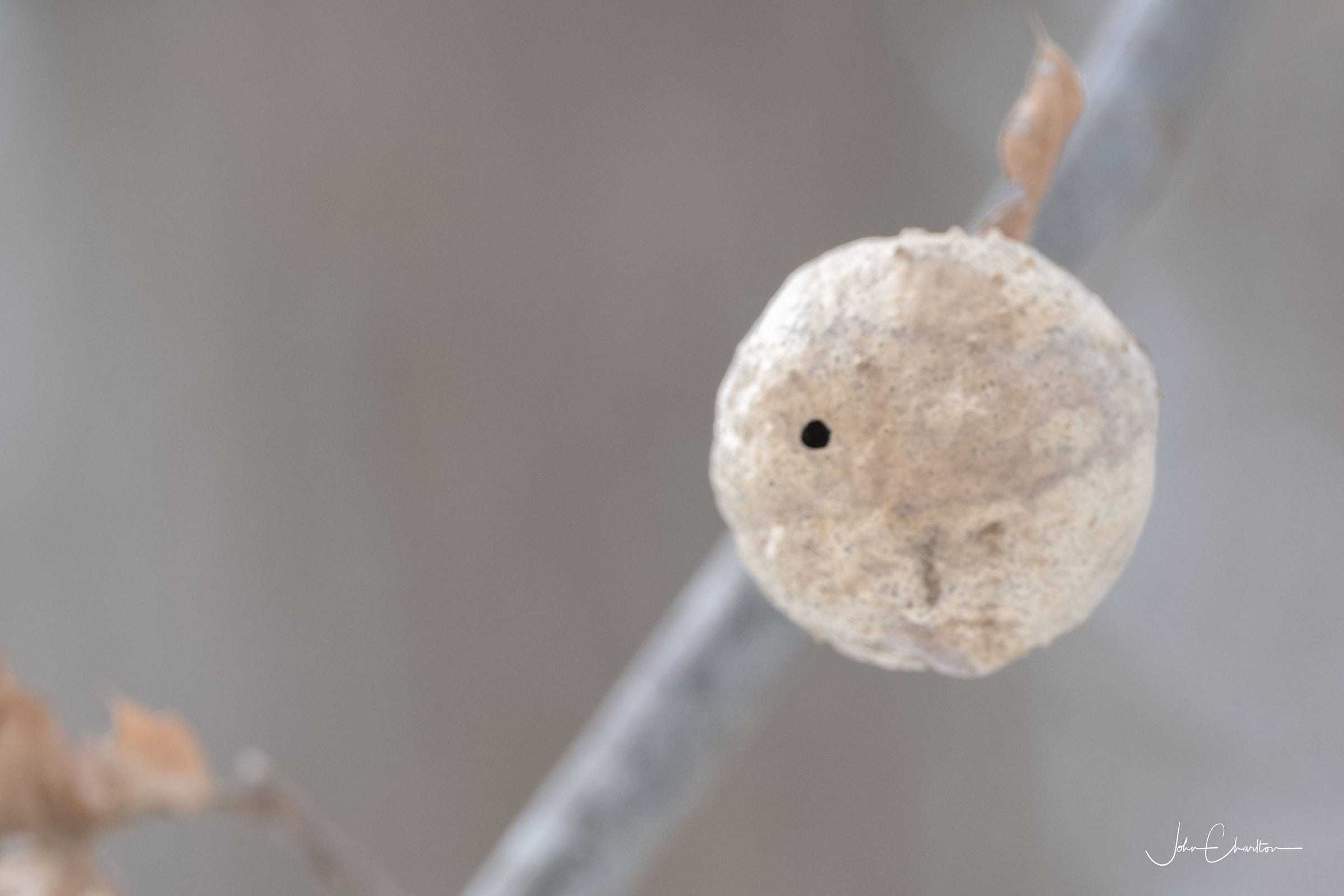
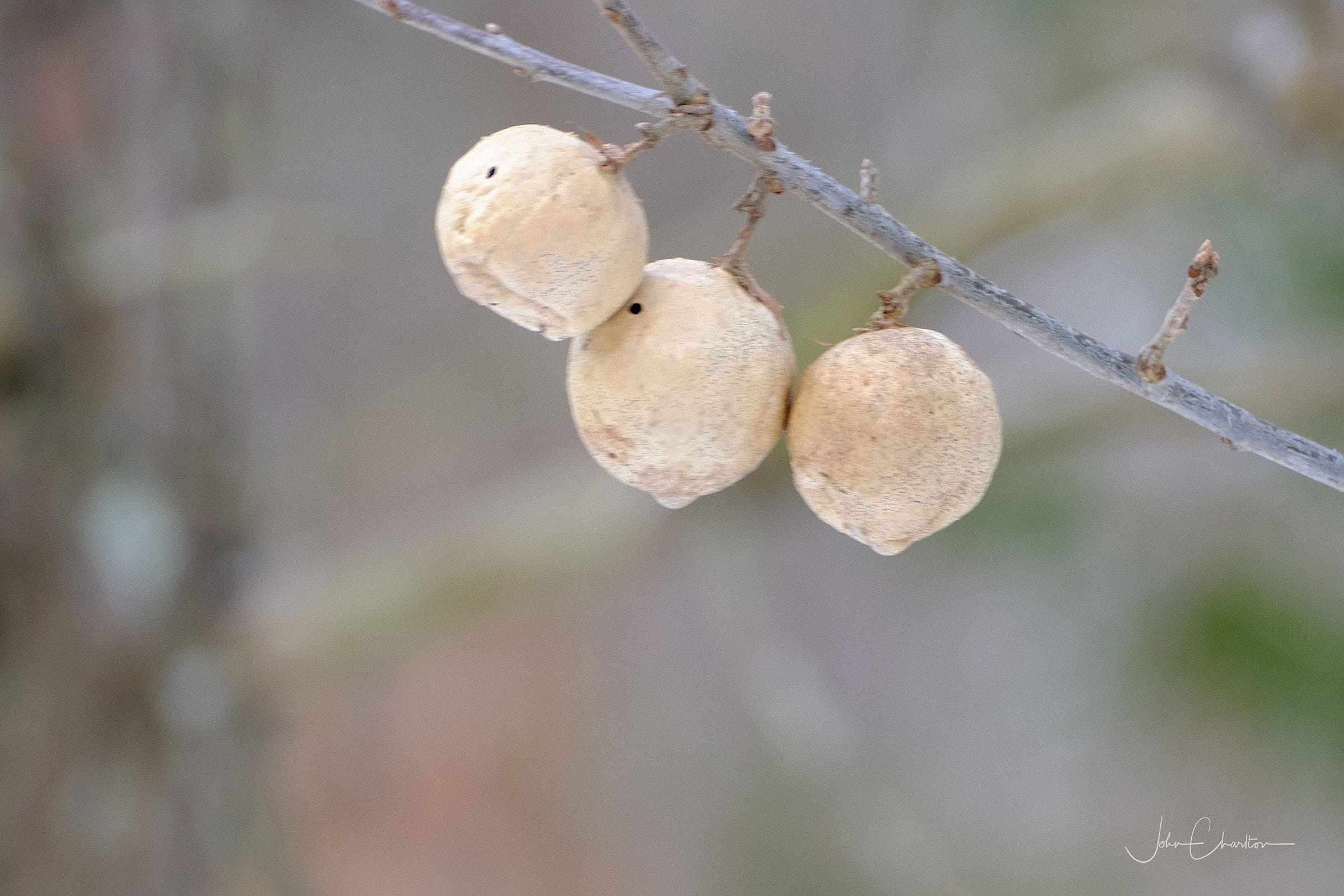
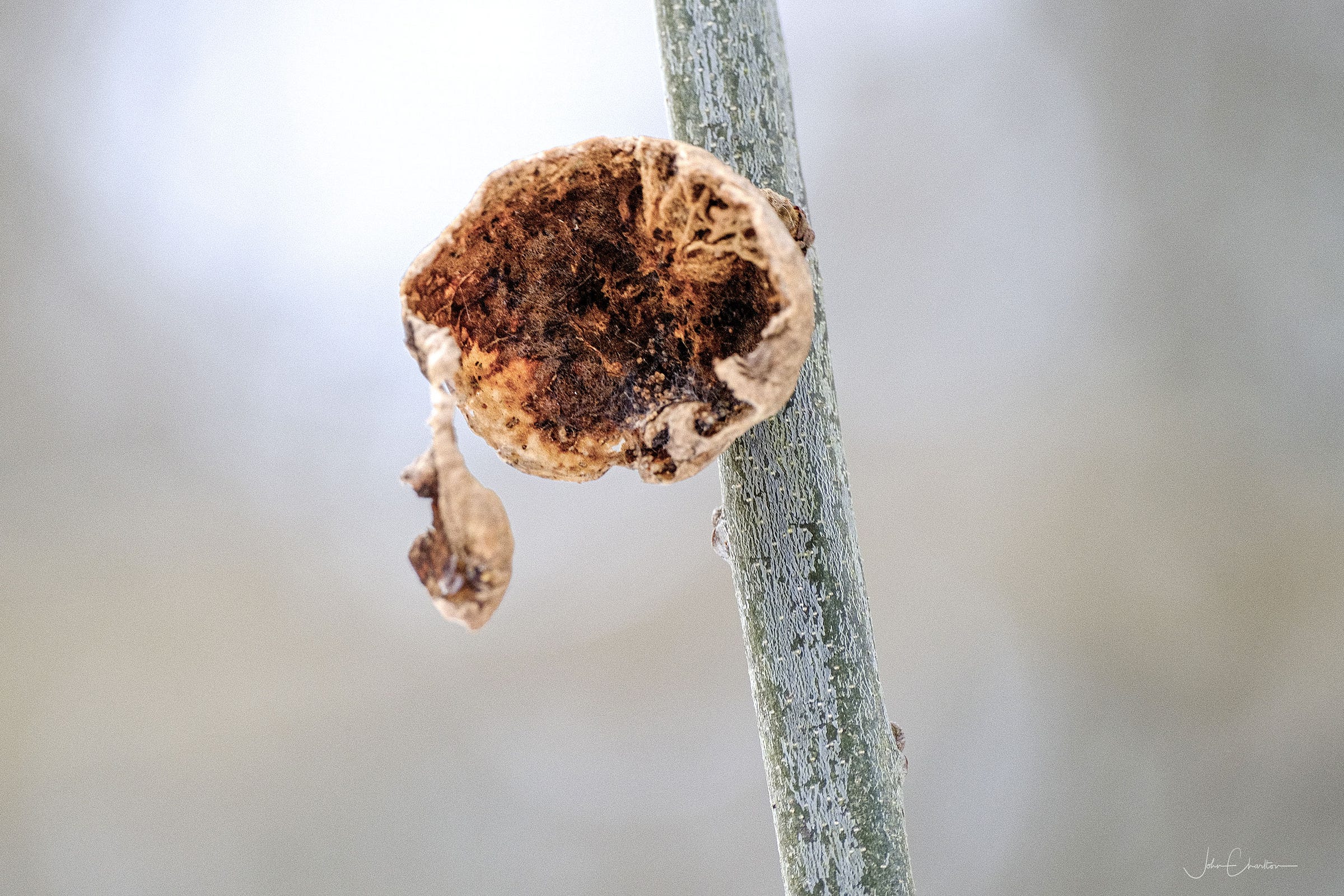
John: This was a fun read and the spirit of generosity from the donor family is commendable.
Fantastic photos John... well done! Looks like it was a great, albeit slightly cold, hike!